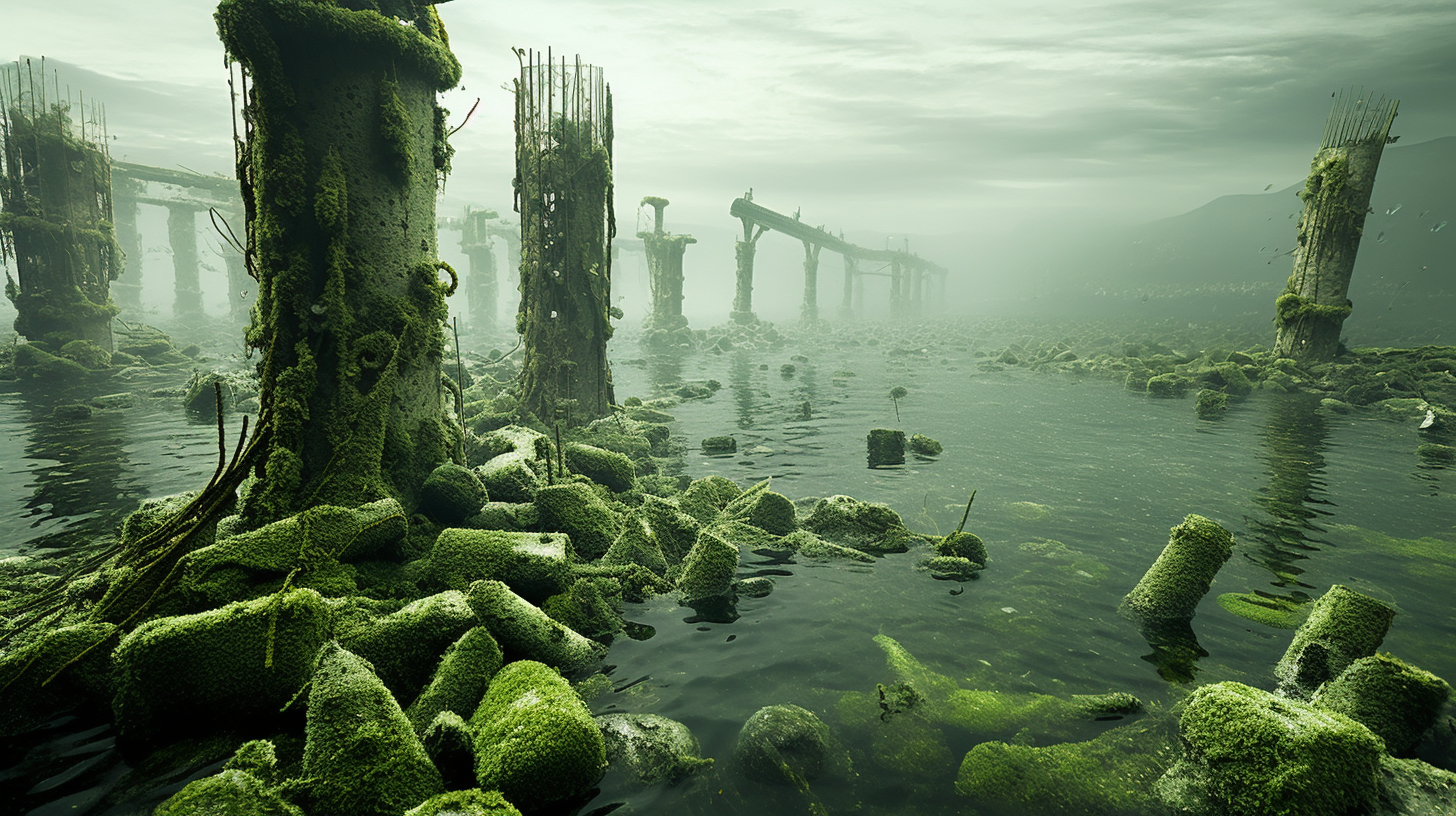Once home to an array of diverse life forms and a symbol of endless abundance, our oceans have now been usurped by an unrelenting conqueror: algae. Neptune’s Garden has become less a myth of treasures, and more a stark reality of green invaders, flourishing in the wake of human disregard for natural balances. The Seven Seas, once royal blue are now cloaked in a spectrum of sickly green, a tapestry visually fascinating, yet narrating a tale of ecological downfall.
The scene could be mistaken for an otherworldly landscape; an incessant spread of algae engulfs entire coastlines. From afar, the hues suggest vitality, but up close, the water is thick, sludgy, and suffocating. This is not the kaleidoscope of life that nature had designed; it’s a monochrome of destruction, a biological dystopia unfolding in real-time. Some call it the ‘green plague’, likening the phenomenon to historical afflictions that ravaged civilizations, but unlike those ancient calamities, this plague feeds on the very elements of decay we’ve so generously provided.
Our previous discussions centered on the algal blooms, a tragic painting of oceans in despair as they struggle under the relentless growth of harmful algae. It only scratches the surface of a deeper malady; a symptom of a maligned cycle exacerbated by warming waters and an excess of nutrients from agricultural runoff, starkly reminding us of the long-term impacts of our environmental apathy. These ‘gardens’ are the new havens for jellyfish swarms and opportunistic species, thriving amid the chaos, embodying a twisted form of survival of the fittest.
In this labyrinth of algae, the once diverse marine ecosystems find themselves choked out, gasping for the dissolved oxygen rapidly depleted by the uncontrolled algal growth. Coral reefs, those majestic underwater cities, stand bleached and barren, silent monuments to the vibrancy they once personified. The impact isn’t solely ecological, either; it cascades into the socio-economic realms, hitting fishing and tourism communities, leaving them teetering on the edge of financial oblivion.
Behind this all-encompassing spread is a ruthless efficiency; the algae are perfectly adapted to the deteriorating conditions we’ve crafted. In regions where we’ve seen the downfall of keystone species, where overfishing has left gaps in the natural order, algae have filled these voids with a voraciousness that can only be described as elemental. Here, in the new Neptune’s Garden, the balance of power is unequivocal, the algae reign supreme, unchecked by predators or competition, an ecological coup d’état dressed in green.
What narratives will we tell our children about the seas? Will we speak of colorful fish and playful dolphins, or will the oceans of their imaginations be tinted in monochromatic green, populated by gelatinous blobs and the floating debris of a civilization’s indifference? The Seven Seas are speaking, yet their voices, once roaring with life, now whisper warnings through the suffocated gurgles of dying ecosystems.
So, as we cast our gaze upon Neptune’s lost domain, we find a perverse beauty in the desolation, a morbid fascination with the world we’ve left to inherit. As we dissect this environmental hecatomb, it isn’t just marine life that’s being tested; it’s the resilience of our own species, our capacity for change in the face of self-authored calamity. These algae-dominated waters are a reflection, a mirror cast upon the waves, asking us to look deeply and absorb the gravity of our collective negligence.
Thus, we tread carefully through this green mirage, understanding that though the seas may survive in some altered, diminished form, the era of diversity and abundance that once graced these waters is a chapter rapidly concluding in the annals of our planet’s history. The sole guardians of Neptune’s Garden now are lessons to be learned, and warnings to be heeded, lest we continue to wander, lost in our own narrative of destruction.
